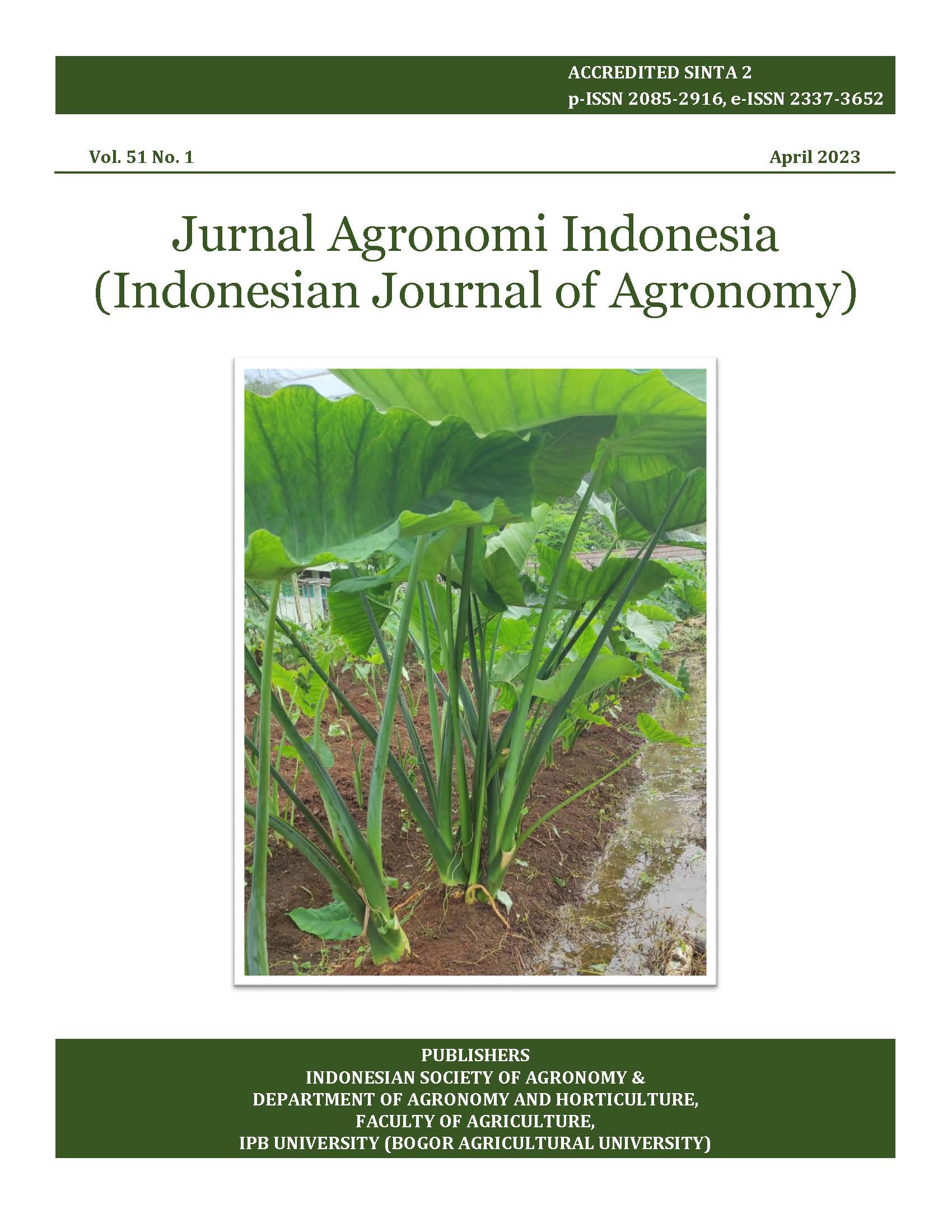Seed invigoration using ultrafine bubble water to increase the vigor of true shallot seed (Allium ascalonicum L.)
Abstract
True shallot seeds are preferable to tubers as planting materials because of their advantages in storage longevity, lower management cost, and lower seed-borne disease risk. However, environmentally limited production and seed deterioration in uncontrolled storage have limited its application. Pre-sowing hydration invigoration accelerates and synchronizes the germination of deteriorated seeds. Ultra-fine bubble water (UFBW) contains reactive oxygen species, which can advance the pre-germinative metabolism of the seed. This study examined true shallot seed invigoration using UFBW. The experiment was conducted in a two-factor of randomized complete block design. The first factor was initial seed vigor based on the vigor index with six levels, i.e., 24, 15, 13, 12, 10, and 9%. The second factor was the invigoration treatment of UFBW (8 and 23 ppm dissolved oxygen concentrations) with two durations (24 and 48 h), 50 ppm GA3, and 3% KNO3 (24 h). UFBW with 23 ppm invigoration for 48 h improved seed vigor based on all vigor parameters. The GA3 50 ppm treatment is the most effective in increasing seed vigor.
Keywords: dissolved oxygen; pre-sowing hydration; reactive oxygen species; seed viability; seed vigor













